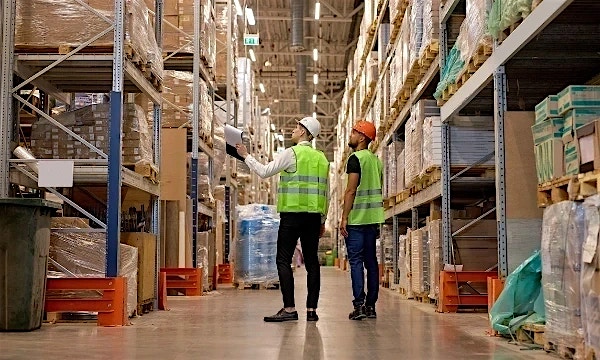More than 140 organizations have joined the 2023 World Robot Conference, where nearly 600 robotic products are on display, in Beijing this week.
This event will showcase the latest developments from the world of AI-powered robotics, including automated guided vehicles (AGVs), autonomous mobile robots (AMRs), self-driving vehicles, co-bots, exoskeletons and humanoids. The global market for these innovations is projected to reach $22.2 billion by 2027, recording a 7.71% CAGR in the last five-year period.
These robots are divided into four categories: conventional industrial robots and co-bots, stationary professional services, mobile professional services and AGVs.
In collaborative and critical environments such as healthcare, manufacturing, automotive, supply chain and logistics and agriculture industries, along with robotic cameras and drones, these AI-powered robots now come with optimized productivity, more reliability, improved quality and safety features that are enhanced by advanced deep learning algorithms.
According to Boston Consulting Group (BCG), professional services robots will be more than double the market size of conventional and logistics robots by 2030.
Fear remains, but the focus is shifting to new skills
While there’s a fear of AI automation leading to job losses in the workforce, a McKinsey report mentions that only 5% of all jobs can be fully automated. With partial automation, only one-third of activities can be performed entirely by automation as they will still require human supervision in the remaining jobs, which will give rise to new kind of employments with upgraded skillsets.
Interestingly, the report adds factors will give rise to new jobs including aging population, development of technologies, investments in infrastructure and buildings, renewable energy, energy efficiency and climate adaptation. By 2030, it’s estimated that 75-375 million workers will switch their occupations and learn new skills.
European footprint
What’s surprising in this AI-powered robotics market is that after an uncertain period in 2020, there is now a surge in investments in European countries. Due to a growing demand for robotic solutions, especially with startups, a diverse industrial base and a strong tradition of R&D, Europe is now a major player in the global market.
“The top five adopting countries within the EU are Germany, Italy, France, Spain and Poland. They account for about 70% of all industrial robots installed within the EU in 2022,” says Marina Bill, President, International Federation of Robotics.
According to The Robot Report, 55 investments totaled $521 million for January with some of the major deals, including Exotec that develops AMRs for warehouse automation, Memic Innovative Surgery (now known as Momentis Surgical) that develops robotic-assisted surgical platforms and UiPath that develops robotic process automation software.
An agile mindset with AI-powered robotics
Focusing on catering to a “right here, right now” need, HCLTech has embraced a more customer-centric approach and its Automation Centre of Excellence enables customers to “think like an agile startup but deliver like a lean enterprise.”
For example, one of Sweden’s leading motorbike manufacturers had a complex ecosystem of over 1,400 multilingual vendors from across Europe. While upgrading its invoice processing system, it wanted to improve accuracy and automate the whole process that would free up skilled resources, increase throughput, reduce errors and save costs.
Designed with machine learning, deep neural networking and natural language processing capabilities, HCLTech EXACTO™ helped the client achieve end-to-end automation solution. With the integration of HCLTech advanced Robotic Process Automation (RPA) capabilities in the client’s e-business suite, the EXACTO™ product alongside the Toscana Business Process Suite (TBPS) enabled it to track the progress of the multilingual invoices under process while also giving the client the interface to validate the final output.
In another example, an international technology company wanted to automate its entire invoicing system and free up talent, minimize errors, reduce costs and increase the processing speed while dealing in large volume of data of over 2,000 global vendors.
HCLTech EXACTO™, in conjunction with TBPS, automated the client’s entire process. While its ML capabilities enhanced intelligent email reading, identifying invoices, extracting invoice data, structuring the information and classifying it into categories, the deep neural networking and natural language processing in RPA automated the data extraction in the processing of invoices. HCLTech also trained the entire client team on the solution and incorporated all the business rules.
In both the cases, the clients were able to reduce average handling time by 40%, provide more than 80% accuracy at field level for all documents, ensure improved audit trails and regulatory compliance, automate data extraction, vendor identification and verification from unstructured data and enable rich domain ontology to process invoice documents.





